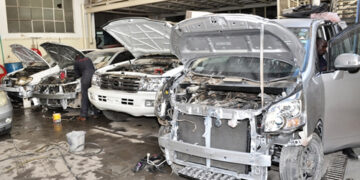A new study has revealed why people living in some areas of Nairobi quickly pick up diseases from animals.
According to the research, pathogens are more likely to jump from animals to humans in areas with high densities of people, livestock, and urban-adapted wildlife such as rats.
The study conducted by International Livestock Research Institute (ILRI) and published in the Proceedings of the National Academy of Sciences Journal focused on emerging diseases in Nairobi city.
Further, the study revealed that the areas affected tend to lack adequate sanitation and waste management as well as lower levels of biodiversity.

Moreover, this research is among the first to use concrete evidence to get at the question of where and how disease transmission occurs in urban settings.
Also Read: Study Shows Significant Health Impact of marijuana on Fetal Development
Led by Dr. James Hassell, a wildlife veterinarian and epidemiologist for the Smithsonian’s National Zoo and Conservation Biology Institute (NZCBI)’s Global Health Program, in collaboration with Kenyan and United Kingdom partners, the study’s findings were based on genetic relationships between E. coli bacteria collected from a group of more than 2,000 people, livestock and urban wildlife from 33 locations across Nairobi.
Scientists compared the E. coli bacteria collected from people, wildlife, and livestock across Nairobi to map out parts of the city that featured the most overlap in these bacterial genes and identify these areas as key battlefronts for emerging diseases.
In addition, the reasoning behind this is, if the bacteria from a person and a cow, for example, got close enough to develop significant genetic overlap, then their hosts could get close enough to swap pathogens.
The head researcher Hansel noted that Nairobi represents many cities in the tropics experiencing what researchers’ term rapid, unplanned urbanization even though the results apply directly to the Kenya capital city.
“When cities grow extremely fast without meaningful urban planning, they are often missing basic infrastructure such as adequate sanitation or waste management systems, especially in low-income neighborhoods,” stated Hansel.
Hansel further noted that the high population densities and large number of residents relying on livestock to make ends meet are some of the conditions facilitating spread of diseases from animals to humans.
Also Read: Unemployed Kenyans are Not Looking for Work – Study Reveals
Similarly, Hansel observed that some of these biodiverse neighborhoods provide a favorable environment for certain wildlife species, including rodents, certain bird species, and some bats, which have been shown to be particularly effective disease carriers.
Nonetheless, the data by the National Library of Medicine stipulates that, Diarrheagenic E. coli accounted for 36.4% of bacteria outbreaks in Nairobi followed by Shigella (3.2%), Salmonella (2.4%), Campylobacter (1.6%), Yersinia (1.3%) and Aeromonas (1.1%) species.
Researchers conducted the study in collaboration with the International Livestock Research Institute, the University of Nairobi, Kenya Medical Research Institute, National Museums of Kenya and Kenya Wildlife Service.
















































































